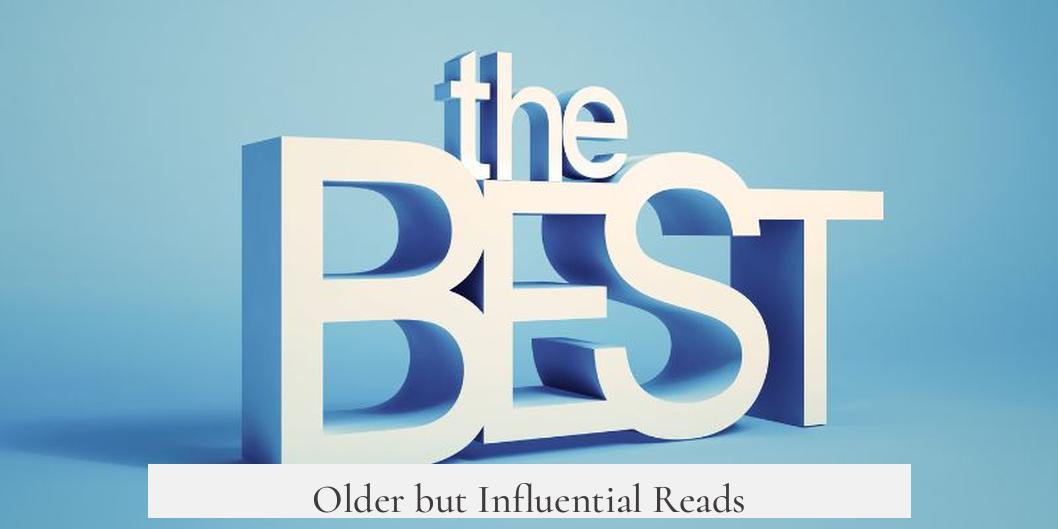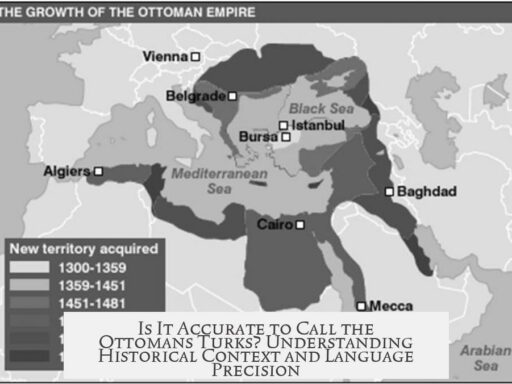The best book on the Thirty Years War is widely recognized as Peter H. Wilson’s The Thirty Years War: Europe’s Tragedy (2011). This comprehensive work serves as the authoritative English-language general history of the war. Wilson combines detailed research with broad thematic scope, offering readers an in-depth understanding of this complex conflict. Despite its length and detail being challenging for beginners, it remains the gold standard among scholars and serious readers alike.
Wilson’s book covers all major aspects of the war, from its religious and political origins to military campaigns and the war’s devastating social impact across Europe. His analysis balances political, religious, and military factors, all supported by extensive primary source references.
For those looking for a shorter and more accessible introduction, Geoffrey Parker’s The Thirty Years’ War (1997, 2nd edition) offers a concise survey. This volume collects essays from various historians and includes Parker’s substantial contributions. It provides a manageable entry point with diverse perspectives but lacks the exhaustive depth found in Wilson’s work.
Primary source materials complement historical narratives effectively. Notable collections include Tryntje Helfferich’s The Thirty Years War: A Documentary History (2009) and Peter H. Wilson’s own The Thirty Years War: A Sourcebook (2010). Both volumes feature translations of documents such as treaties, broadsheets, and two important memoirs—that of soldier Peter Hagendorf and civilian Hans Heberle—bringing vivid first-hand voices into the modern reader’s reach.
- The Documentary History emphasizes interpretative essays alongside original texts.
- The Sourcebook offers wider and briefer extracts, perfect for readers seeking breadth over length.
Another valuable work, Experiencing the Thirty Years War: A Brief History with Documents (2013) by Hans Medick and Benjamin Marschke, leans toward civilian experiences and social history, offering a notable thematic shift from military and political narratives.
Those interested in the cultural atmosphere of the period should consider the classic novel Simplicius Simplicissimus (1668) by Grimmelshausen, available in English translation. This fictional memoir captures the chaos and suffering experienced during and after the war, providing a literary complement to historical studies.
Older interpretations like Sigfrid H. Steinberg’s The Thirty Years’ War and the Conflict for European Hegemony 1600-1660 (1966) remain influential but are outdated in some respects. Steinberg’s view emphasizes the war as part of the Bourbon-Habsburg rivalry, yet modern scholarship offers more nuanced perspectives. It is advisable to read such works after becoming familiar with recent studies.
Recently, scholars have explored the Thirty Years’ War from gender perspectives. Mary E. Ailes’s Courage and Grief: Women and Sweden’s Thirty Years’ War (2017) stands out here, focusing on women’s experiences during the conflict, thus reflecting the latest research trends.
Some readers may want to study the war within broader military or historical contexts. Geoffrey Parker’s The Military Revolution: Military Innovation and the Rise of the West, 1500-1800 (1996) is a critical resource for understanding early modern warfare innovations related to the Thirty Years’ War.
| Title | Author/Editor | Year | Notes |
|---|---|---|---|
| The Thirty Years War: Europe’s Tragedy | Peter H. Wilson | 2011 | Comprehensive, detailed, standard English monograph |
| The Thirty Years’ War | Geoffrey Parker (ed.) | 1997 | Shorter, essay collection, accessible overview |
| The Thirty Years War: A Documentary History | Tryntje Helfferich (ed. & trans.) | 2009 | Primary sources with interpretative essays, memoirs included |
| The Thirty Years War: A Sourcebook | Peter H. Wilson (ed. & trans.) | 2010 | Broad selection of primary texts, shorter extracts |
| Experiencing the Thirty Years War: A Brief History with Documents | Hans Medick & Benjamin Marschke (eds.) | 2013 | Civilian-focused documents and interpretation |
| The Thirty Years’ War and the Conflict for European Hegemony 1600-1660 | Sigfrid H. Steinberg | 1966 | Older interpretation, historically influential but partly outdated |
| Courage and Grief: Women and Sweden’s Thirty Years’ War | Mary E. Ailes | 2017 | Gender-focused historical perspective |
In summary, no single book fits all readers’ needs perfectly. For authoritative, broad, and detailed coverage, Wilson’s 2011 book remains unmatched. For accessible surveys, Parker’s edited volume offers an excellent alternative. Those interested in original voices should pursue Helfferich and Wilson’s sourcebooks, while thematic and interpretive diversity grows with works on gender history and social perspectives.
- Peter H. Wilson’s The Thirty Years War: Europe’s Tragedy is the definitive general history.
- Geoffrey Parker’s volume suits readers seeking a shorter and varied overview.
- Helfferich and Wilson’s collections provide primary sources and first-person memoirs.
- Gender history adds recent perspectives, exemplified by Mary E. Ailes’s work.
- Older interpretations exist but should be read with caution and supplemented by modern research.
- Literature like Simplicius Simplicissimus captures the war’s atmosphere vividly.
What is the Best Book on the 30 Years War?

If you’re diving into the tangled web of the Thirty Years’ War and wondering, “What is the best book on this epic European conflict?”, the straightforward answer is: Peter H. Wilson’s The Thirty Years War: Europe’s Tragedy (2011). It’s the go-to English-language standard, widely praised by historians and readers alike. But before you rush to start the 1,200 pages, hang tight—there’s a rich variety of books that suit every reader: from concise overviews to captivating firsthand accounts.
So, let’s embark on a guided journey through the best books covering the Thirty Years’ War, each bringing a unique lens. Trust me, it’s less like getting lost and more like assembling a fascinating historical mosaic.
Why Peter H. Wilson’s Masterpiece Tops the List
Wilson’s The Thirty Years War: Europe’s Tragedy is no light beach read. At nearly 1,200 pages, it’s a great big feast of history, politics, religion, and warfare. Wilson digs deep into the war’s complexity, integrating military, social, and diplomatic history into one coherent narrative.
He doesn’t just recount battles. Instead, he explains the despair of entire communities, the rise and fall of dynasties, and how this conflict shaped Europe. He’s acclaimed for clarity, insight, and, frankly, the stamina it requires to cover such an intimidating topic.
Are you a stickler for thoroughness and detail? This book is your war diary.
Shorter and More Manageable Options
For a less epic but still authoritative read, Geoffrey Parker’s edited The Thirty Years’ War (1997, 2nd edition) is a winner. It offers a collection of essays by leading scholars, crafted to be accessible without sacrificing depth. With Parker himself penning most essays, the tone remains consistent and the volume quite digestible.
This book is perfect if you want a broader perspective with less page commitment.
Want to Get Up Close? Primary Documents and Memoirs

Sometimes you want history that feels alive—memories, letters, treaties, broadsheets straight from the 17th century. Enter Tryntje Helfferich’s The Thirty Years War: A Documentary History (2009). This volume includes vivid first-person memoirs, notably of Peter Hagendorf, a soldier, and Hans Heberle, a civilian. Reading their words is a thrilling window into the past.
Helfferich beautifully combines original sources with interpretive essays, giving you both primary material and context. Imagine reading protest petitions from beggars while sipping your morning coffee! It’s immersive, detailed, and perfect for readers who want to step directly into history.
If you’re hooked on primary sources but want breadth, Peter H. Wilson’s The Thirty Years War: A Sourcebook (2010) offers similar content with a broader range but shorter excerpts. They overlap somewhat, but both are valuable and complement each other well.
And don’t miss Experiencing the Thirty Years War: A Brief History with Documents (2013) edited by Hans Medick and Benjamin Marschke. It zooms in on the civilian experience during the war, a refreshing change from battle-heavy narratives.
The Power of First-Person Accounts
Among the most gripping readings are the personal memoirs of contemporary witnesses. Soldier Peter Hagendorf’s experiences reflect the chaos of mercenary life, while civilian Hans Heberle’s accounts show the toll on townspeople. Their stories humanize the sweeping history.
Want to soak in the vibe of the era? Check out the English translation of Grimmelshausen’s Simplicius Simplicissimus (1668). It’s a classic novelistic portrayal of the social and psychological effects of the war, blending history and literature in a vivid narrative.
Looking for Special Themes or Perspectives?
Are you curious about the war’s impact beyond the battlefield? Some scholars explore this conflict from fresh angles. For example, Mary E. Ailes’ Courage and Grief: Women and Sweden’s Thirty Years’ War (2017) zooms in on gender history, spotlighting women’s roles and experiences—often overlooked in traditional war stories.
This recent research trend adds layers to our understanding. Don’t be surprised if you start noticing the silhouettes of civilians, especially women, amid the soldier’s march.
Older but Influential Reads

If you like to explore how historical interpretations evolve, Sigfrid H. Steinberg’s The Thirty Years’ War and the Conflict for European Hegemony 1600-1660 (1966) is a landmark work. It views the war as part of a Bourbon-Habsburg rivalry. Though considered outdated in parts today, it influenced decades of scholarship.
Still, take it with a grain of historical salt and use it as a springboard to appreciate current research’s sophistication.
Expanding Your Context: Military Innovation and the Wider Early Modern Era
For a bigger picture, Geoffrey Parker’s The Military Revolution: Military Innovation and the Rise of the West, 1500-1800 (1996) connects the Thirty Years’ War with larger themes of warfare evolution. It’s a broad study about how military ideas transformed Europe, making it useful for readers fascinated by strategy and technology.
It gives insights into why the conflict was not just a tragedy, but also a pivot in military history.
Summary Table of Recommendations
| Book Title | Author/Editor | Year | Why Read? |
|---|---|---|---|
| The Thirty Years War: Europe’s Tragedy | Peter H. Wilson | 2011 | The detailed and definitive English-language narrative; highly respected |
| The Thirty Years’ War | Geoffrey Parker (ed.) | 1997 (2nd ed.) | Concise multi-essay collection; easier and quicker read |
| The Thirty Years War: A Documentary History | Tryntje Helfferich (ed. & trans.) | 2009 | Rich primary documents and memoirs with scholarly context |
| The Thirty Years War: A Sourcebook | Peter H. Wilson (ed. & trans.) | 2010 | Extensive primary sources with commentary |
| Experiencing the Thirty Years War: A Brief History with Documents | Hans Medick & Benjamin Marschke (eds.) | 2013 | Civilian focus with documents and interpretation |
| The Thirty Years’ War and the Conflict for European Hegemony 1600-1660 | Sigfrid H. Steinberg | 1966 | Older key interpretation; dated but influential |
| Courage and Grief: Women and Sweden’s Thirty Years’ War | Mary E. Ailes | 2017 | Explores gender aspects and women’s experiences |
Practical Tips for Selecting Your Next Read

- Newcomer to the war? Start with Geoffrey Parker’s edited volume for a compact survey.
- For deep dives and research: Peter H. Wilson’s magnum opus is unmatched.
- Love raw historical voices? Tryntje Helfferich’s documentary history makes the past speak directly.
- Looking beyond generals and battles? Explore Mary Ailes’ gender history or civilian-focused volumes by Medick and Marschke.
- Want a cultural feel? Don’t miss Simplicius Simplicissimus for a literary ride through the era.
Final Thought: Why Does the Best Book Matter?
The Thirty Years’ War is often called Europe’s greatest tragedy before the 20th century. It changed borders, nations, and lives for decades and centuries after 1648. Choosing the right book means you get not just a tale of battles but insight into political intrigue, cultural shifts, and human endurance.
Don’t just read history; experience it. Pick a book that suits your style, and soon enough, the dusty conflict will turn into a vivid saga of human drama and historical relevance.
So, will it be Wilson’s encyclopedic work, Parker’s concise collection, or the gripping real voices of soldiers and civilians? The choice is yours—but whichever you pick, history awaits.
What is considered the standard book on the Thirty Years War in English?
Peter H. Wilson’s The Thirty Years War: Europe’s Tragedy (2011) is the standard. It provides detailed coverage but is lengthy and dense for beginners.
Are there shorter or more accessible books on the Thirty Years War?
Yes. Geoffrey Parker’s edited volume, The Thirty Years’ War (2nd ed., 1997), is shorter and easier to manage. It offers essays from various scholars and different perspectives.
Where can I find primary source documents and memoirs from the war?
Tryntje Helfferich’s The Thirty Years War: A Documentary History (2009) and Peter H. Wilson’s The Thirty Years War: A Sourcebook (2010) provide collections of primary sources in English translation.
Is there a perspective on the war focusing on civilians or soldiers’ personal experiences?
Yes. Helfferich’s volume includes memoirs of soldier Peter Hagendorf and civilian Hans Heberle. Hans Medick & Benjamin Marschke’s Experiencing the Thirty Years War (2013) also focuses more on civilian experiences.
Are there newer interpretive approaches to studying the Thirty Years War?
Recent works include gender-focused studies like Mary E. Ailes’s Courage and Grief: Women and Sweden’s Thirty Years’ War (2017). This approach is gaining popularity for exploring social aspects of the conflict.




